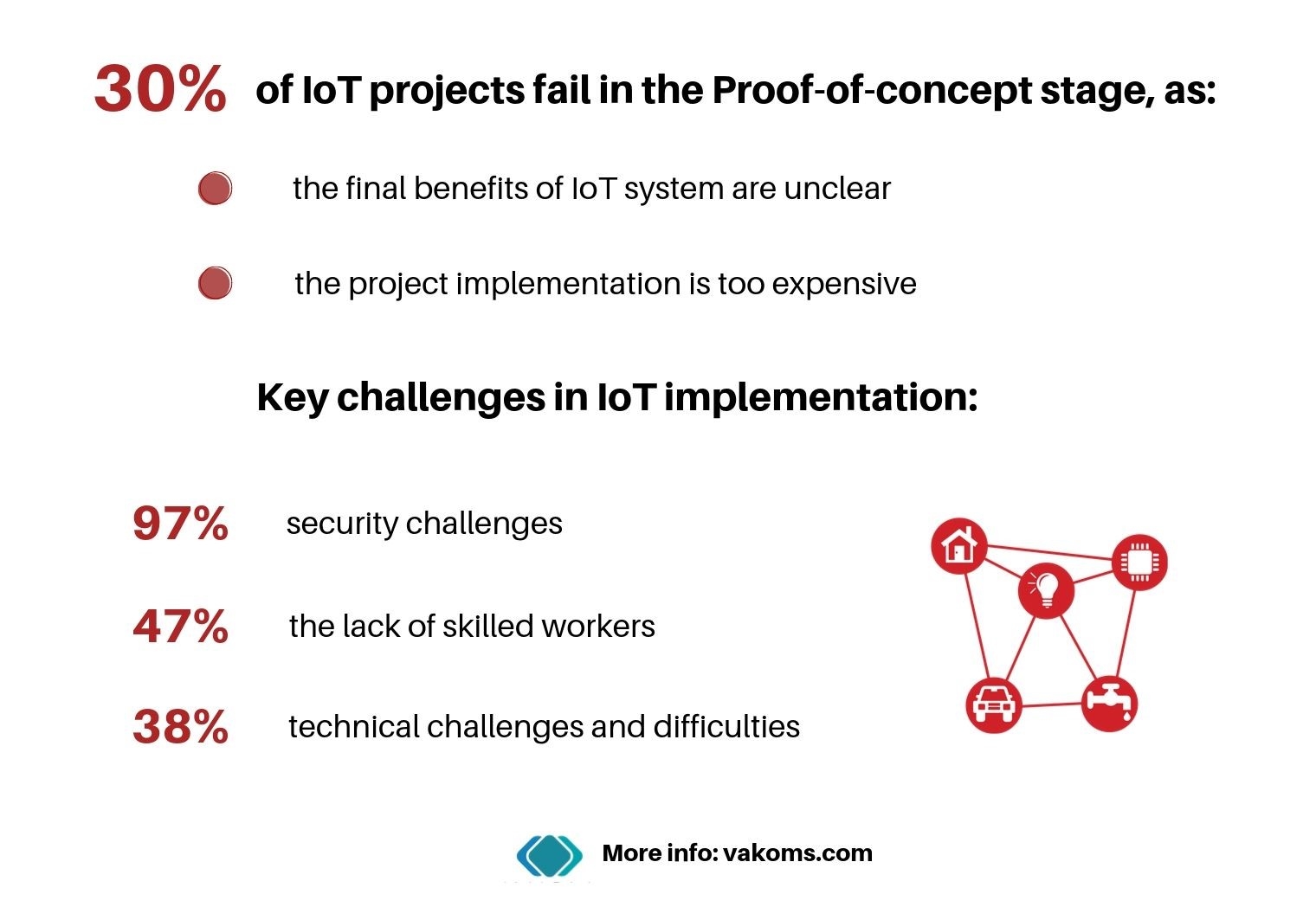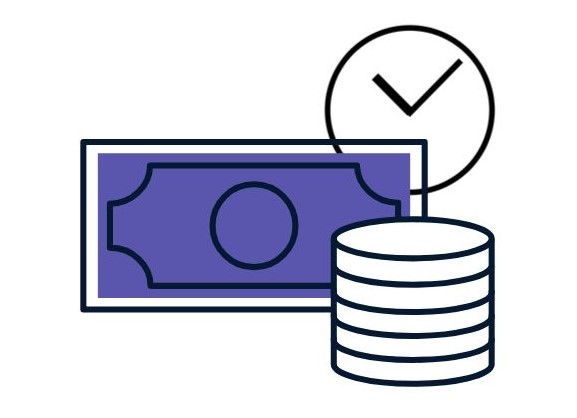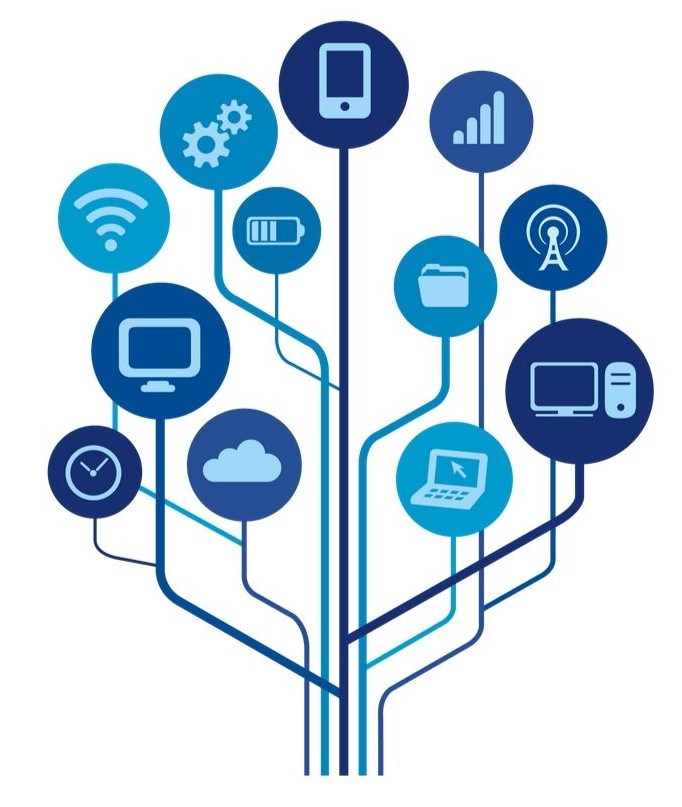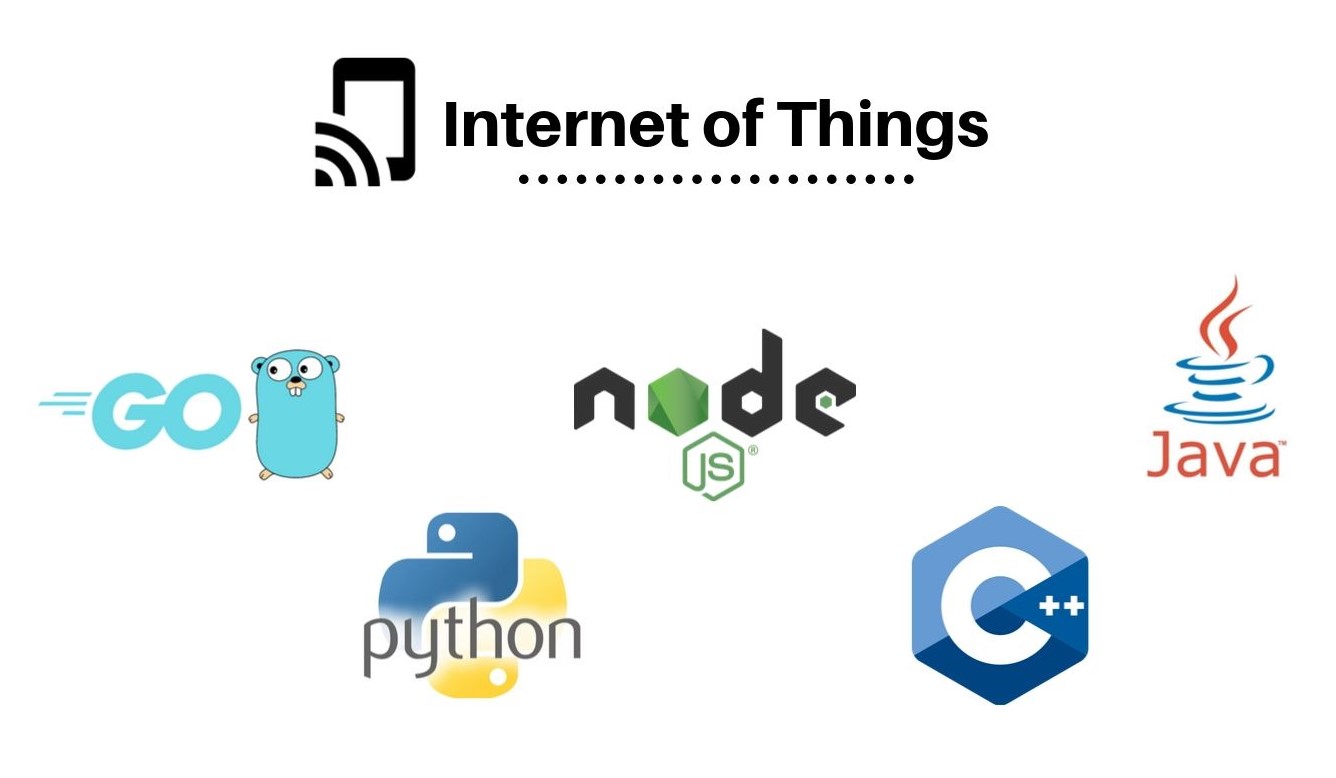6 quick tips to prevent your IoT project from failure

What difficulties and challenges could put your IoT startup at risk? A recent Microsoft research reveals that 30% of IoT projects fail at the proof-of-concept stage, with more challenges coming later.
“So why is an IoT product development such a hurdle?” – you might ask.
We’ve analyzed the key report outcomes and created a set of recommendations you can use to make any IoT project succeed.
Challenges & reasons why some IoT projects fail
Microsoft asked 3000 decision-makers about their biggest challenges in IoT adoption, and here’s what they got.
How can you avoid these risks in your IoT product development?
1. Set a clear problem to solve. Then declare how you solve it
Gartner claims that 75% of IoT hardware and software development projects fail to meet business objectives. Such statistics is quite alarming, agree?
To make sure it doesn’t happen to your project, define a specific problem your IoT system solves and a business area where you implement it. For example, it can monitor equipment or automate financial reporting tasks. Whatever it is, make sure that the problem is vital and clear.
If you’re developing an enterprise IoT system, plan its integration within your organization from the very beginning. It’s vital to ensure its interoperability with other software. Will it work with existing systems and accounting software? Will you be able to adjust the existing work processes?
2. Set realistic timelines & budget
Setting too short timelines for software development ends up either with redesigning some IoT components or missing on crucial processes like QA testing. Either way, you might waste your time & money fast.
On the other hand, too long deadlines might turn your project into a never-ending battle with no clear purpose.
So how do you stay realistic?
First and foremost, provide clear and detailed project requirements for your software development company. As based on these, you will receive a proposal with concrete IoT project milestones.
Milestones are specific checkpoints in software development showing what has been done up till now and how. They will divide your project by smaller deliverables and set the start and the end dates for each development stage.
Thus, it will be easier to track the progress and stay within your timeframes.
3. Don’t neglect security of your IoT system
97% of business owners still have security concerns when implementing their IoT products. To avoid putting your business and potential users at risk, think over security from the beginning of your IoT project.
Some of the best practices are encrypting all the data transmitted through the system, using secure IoT protocols, strong user authentication method and testing every IoT system component before release. Security experts will advise you on specific measures to protect your IoT network from external and internal attacks.
4. Get the right team of experts
Let’s get this clear: building an IoT development team is difficult. It requires a diverse and rare skill set. You will need hardware & software developers, embedded engineers, cloud computing experts, designers, DevOps and QA engineers, as well as IoT project managers with strong soft skills.
With a lack of local experienced tech specialists and their high cost, it is a wise idea to turn to a reliable IoT development company from Ukraine. The country is known for offering a great balance of price and service quality, as well as some other strong benefits of cooperation.
5. Choose the right tech stack for your IoT project
Do you know why Node.js is considered to be one of the best choices for building back-end in IoT projects? The language is very fast, which speeds up the request-response flow from sensors, wearables and other IoT devices. Besides, it requires few memory resources on the server-side, letting you build scalable and data-intensive web apps for real-time processing.
Tip: when in doubt which programming language to choose, think of your top priorities: speed, security or flexibility? For example, C++ is extremely fast and flexible, but it isn’t the safest one due to its direct memory access.
Java is highly portable, meaning it can run on multiple OS with a single codebase. So if you plan to target web, mobile and desktop platforms, Java might be one of the best choices.
Whatever programming language you choose, it should simplify and speed up the development process. It shouldn’t impose any limitations to your IoT system in the future.
6. Use the power of prototypes
A prototype is a draft visualization of your IoT system presenting its main features and the way users will interact with it.
By all means, don’t skip this stage. Prototypes allow testing your IoT idea for system layout and usability before actually building it.
Discuss IoT system prototype with your software company and make any alterations needed. You can also show it to the end-users to get their precious feedback. Is the IoT system simple enough to use?
Since IoT system development is usually complex and resource-intensive, prototyping can save you lots of time and money on later-stage changes.
Conclusion
There are some hidden challenges in IoT system development you might not consider at first. Carefully plan its integration within the existing environment, stay within your timelines & budget and choose the right tech stack for your project. When it comes to implementing your IoT idea, everything matters.
Truly, the market is competitive and IoT product development is complex. But that makes implementation of your IoT idea even more exciting, doesn’t it?









